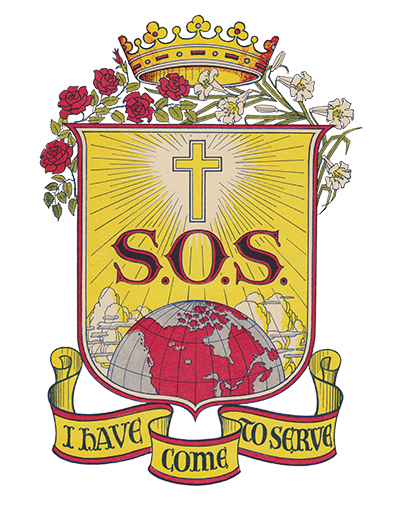

The contribution of the Sisters of Service at Pier 21, now a National Historic Site, is honoured in the site's national museum in Halifax, which opened on July 1, 1999. For more than four decades, Pier 21 was known as the Gateway to Canada. From October 1925 until 1969, the Sisters of Service welcomed, assisted, directed and cared for Catholic immigrants, who were part of the one million passengers who embarked from trans-Atlantic boats, ships and ocean liners at this Eastern Canadian point of entry.
In constant demand in the adjacent Immigration Building, the Sisters provided reassurance, encouragement and support to the newly-arrived as well as acted as interpreters. In addition to giving guidance about immigration procedures, the Sisters helped to locate baggage and relatives, send telegrams and buy food for the train journeys. Addresses of the Sisters' residences in six Canadian cities were distributed as well as prayer cards, small religious articles, addresses of foreign-language newspapers and ethnic organizations across Canada. The names and addresses of the immigrants were typed and sent to their future dioceses and parishes.
Over a two-month period in 1926, the Sisters met 30 boats and assisted 2,475 passengers. With the reopening of Pier 21 after the Second World War, the Sisters returned, meeting 98 ships and assisting 23,529 passengers in 1948. Eight years later, immigration continued to escalate and the Sisters met 168 ships carrying 40,596 passengers, more than half of whom were Catholic.
During the 44 years at Pier 21, a total of 13 Sisters served with three Sisters concurrently at the port during the peak periods. On the front lines were the Sisters who spoke European languages, particularly Sisters Mary Szostak (1929-1934); Josephine Dulaska (1934-1942,1947-1962); Florence Kelly (1951-1955) and Salvatrice (Sally) Liota (1955-1969).